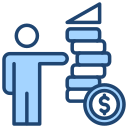Start Here: Retirement Planning Basics for Newbies
Today’s chosen theme: Retirement Planning Basics for Newbies. Welcome to a friendly starting point where we turn confusing jargon into doable steps, share real stories, and help you build confidence—one smart habit at a time. Join in, ask questions, and subscribe for weekly beginner-focused guidance.

Define Your Why and Your Timeline
Close your eyes and imagine a regular Tuesday in retirement. Are you volunteering, gardening, consulting part-time, or hiking new trails? A vivid picture turns saving from a vague chore into a meaningful choice. Share your vision in the comments to inspire fellow newbies.


Define Your Why and Your Timeline
Pick a target retirement age, then add a two-year buffer on either side. Life happens, markets wobble, and plans evolve. A range keeps you realistic yet optimistic, and it helps you calibrate contribution levels without feeling boxed in by a single date.
Build a Solid Money Base

Use a simple 50/30/20 framework as a beginning: needs, wants, and savings. Track for one month, then adjust. The goal isn’t perfection—it’s awareness. You’ll quickly spot tiny leaks that, when plugged, become automatic retirement contributions you barely feel.
Use Retirement Accounts to Your Advantage
If your workplace offers a match, contribute at least enough to capture it. That match is essentially free money that compounds for decades. Newbies often overlook this easy win—set your contribution today, then comment if you want help decoding your plan.

Investing Made Simple (and Calm)

Target-Date Funds Are Training Wheels
A single target-date fund automatically adjusts risk as you approach retirement. It’s a tidy one-and-done solution for beginners. My cousin Ben started with one while learning the basics; years later, he still appreciates its quiet, steady discipline.

Diversify Broadly and Keep Fees Low
Index funds spread your risk across many companies and charge less. A 1% fee might sound tiny, but over decades it can erode tens of thousands. Favor low-cost options and let compounding do the work while you focus on living your life.

Automate Contributions and Increases
Set contributions to draft on payday so saving never depends on willpower. Every six months, auto-increase by 1% until you reach your target. Automation builds a quiet success story in the background while you celebrate milestones in the foreground.
Know Your Safety Nets and Risks
You can claim as early as 62, receive full benefits around your full retirement age, and increase benefits by delaying to 70. Timing affects monthly income. Keep records, check your earnings history, and plan benefits as one piece of your broader strategy.
Know Your Safety Nets and Risks
Rising prices and longer lifespans mean your money must work harder and longer. Consider growth assets for early decades, then gradually dial down risk. Rules of thumb like the 4% withdrawal rule are starting points—adjust with care as your life unfolds.


Your First 90-Day Action Plan
Weeks 1–2: Set the Stage
Enroll in your workplace plan or open an IRA. Contribute enough to get any employer match, choose a target-date or broad index fund, and write down your retirement “why”. Post your three-sentence vision below to keep yourself accountable.
Weeks 3–6: Stabilize Cash Flow
Build your emergency fund starter, verify your budget, and schedule automatic transfers. Knock out one small high-interest debt to feel momentum. Share a before-and-after snapshot of a spending tweak that freed up money for your future self.
Weeks 7–12: Build and Learn
Auto-increase contributions by 1%, review fees, and read one intro guide on Social Security or Roth vs. Traditional. Celebrate progress—then subscribe for weekly tips tailored to Retirement Planning Basics for Newbies, so your journey stays simple and steady.
